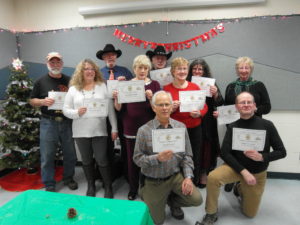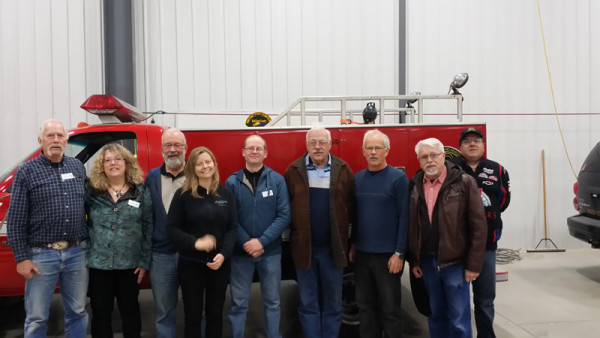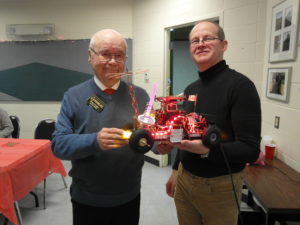- Home
- Registration
- Site Tools
- Articles
- Swap n Shop
- Contesting
- Grounding information for everyone
- History of the Central Alberta Amateur Radio Club
- CAARC owned Repeaters
- Club Repeater Info
- GMT Time Conversion Table
- VE/VA6 Incoming QSL Bureau
- Pine Lake Tornado Friday July 14, 2000.
- Amateur Radio to the Rescue
- CANWARN
- HAM Nation with Bob Heil K9EID
- Net info
- Events.
- ARES
- Links and On line study course.
- Field Day 2019
- Members D/L
- Forum/Swap and Shop
VE6BLD
Welcome to the CAARC web site. I have been a Ham since 1978 and I am active on most modes from HF to UHF Satellite communications.
Posts by VE6BLD
Silent Key
Apr 1st
Silent Key:
VA7RCG Roger Gibson , died on March 5th 2017, Celebration of Life will be held at Delburne Community Hall on Saturday, April 29th at 1:30 pm.
Roger was Deputy Director of Emergency Management, a volumteer firefighter with Delburne Fire Rescue and a member of CAARC.
Open microphone, coffee, tea and desert. All welcome.

CAARC Members receive awards for volunteering during the last year.
Dec 20th
CAARC Members receive awards for volunteering during the last year. Congratulations to the members who received Volunteer Service and Volunteer Service with Excellence awards.
Congratulations to Doug VE6DJC on winning the GIZMO! We look forward to seeing what he adds to it for next year’s Christmas dinner!
Gallery Editing Unavailable while being repaired
Nov 2nd
The Gallery is experiencing a PHP problem after our hosting company updated their PHP CMS software. Â (Nov 7 th) You can now view the Gallery by clicking the Gallery drop down menu but you cannot add or edit anything in your gallery. We are trying to resolve the problem.
Bob
Webmaster
CAARC
Amateur Tower Protocols
Sep 26th
A good one for the web. Its for Calgary but the laws are federal.
Rick
VE6RAK
This message for our members in Calgary, Forwarded from Wally:
Hello all,
I was asked to help find some info on what exactly the rules for towers were within the City of Calgary. I finally tracked down the brochure from the City regarding towers and it is attached.
Bottom line is they do not have direct authority over towers but encourage some protocols be observed (kind of a good neighbour policy). There is a City phone number to call if needed as well.
Basically, towers that do not exceed 15m, and with associated antennas that do not exceed 18.75m, do not require any consultation but Amateurs are encouraged to follow the notification guidelines in the document.
There may be restrictive caveats in some neighbourhoods though, and those should be listed in the property documents.
This would be a great document to have available to all hams via their respective club websites. If anyone sees that there are other clubs that are not represented in this email please forward a copy to them or send me their contact info and I can pass it along.
Thanks,
Dave VE6GAD
73 de VE6LK/AI7LK
..Vince
city-of-calgary-protocols-concerning-amateur-towers-1
New volunteer net control operator
Apr 19th
We have a new volunteer for the Monday evening net controller.
Thanks to Maria VA6TFL for your willingness to help with the net.
Any other volunteers would be welcomed to add to the list.
Thanks to the five other net controllers for taking your turn.
Please check Updated Net Controller List under the Net info TAB
73
Bob VE6BLD
CAARC Net Controller Co-ordinator
Canwarn Training
Mar 24th
CANWARN, acronym for CANadian Weather Amateur Radio Network
Please note that CANWARN is not about storm chasing, it is about putting trained eyes at the local level to confirm what is happening under severe weather and communicating that information to the Meteorological Service of Canada.Here’s how CANWARN works in Central Alberta. When the regional weather forecast office (for the prairies this is the Prairie Storm Prediction Centre in Winnipeg, MB) would like to get ground observations of potentially severe thunderstorms they telephone the CANWARN person whom they have listed as the call-out person for the area of interest. In Central Alberta this will be the same people that are listed as ARES emergency coordinators. All Central Alberta and Olds ARES EC’s are trained CANWARN network controllers. The mechanics of how the net operates, local hams are notified and how their weather reports are forwarded to the forecast office are up to the CANWARN net controller. CANWARN Net Control may relay the observations or may elect to use a phone  to put the forecasters and amateur observer in direct contact.Typically, the person contacted by the Meteorological Service of Canada notifies the affected-area CANWARN hams who then radio their weather reports to their CANWARN Net Control Net. Net control then forwards the weather observations to the weather forecast office on a dedicated 1-800 phone number. As the storm moves along, reports would hopefully still come in from either stationary or mobile spotters allowing weather forecasters to continually compare the Carvel and Strathmore Doppler radar to what is being observed at ground level (below the radar horizon) and adjust their weather forecasts, Watches and Warnings accordingly.

New CAARC Executive for 2015 – 2016
Nov 24th
The Annual General Meeting was held on Wednesday Nov 18th at the Red Deer Search and Rescue. Congratulations to the members who were elected to the new executive.
CAARC Executive for 2015 – 2016
Past President   Bob King VE6BLD
President– Stephen Lee VA6SGL
Vice President– Rod Lins VE6XY
Secretary-Â Sandy Jacobs VE6SND
Treasurer– Karen McKinney VA6LDY
Directors
- Brian Davies VE6CKC
- Garry Jacobs VE6CIA
- Greg McKinney VA6GMC
- Jeff Low VA6JL
- Mike Mailiot VE6MIM
 Appointments
Repeaters
Skip MacAulay VE6BGT
Emergency Coordinator
Jeff Low VA6JL
Publicity
Bob King VE6BLD
Webmaster
Bob King VE6BLD
Net Control
Bob King VE6BLD







